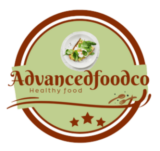The liqiud Gold:Exploring the Wonders of Olive Oil 2023
often referred to as “liquid gold,” is a versatile and beloved ingredient in kitchens worldwide.
Its rich history, health benefits, and culinary versatility make it a staple in many households.
In this blog post, we will delve into the fascinating world of oil, exploring its origins, production methods, various types, and the numerous ways you can incorporate it into your daily life.
The liquid gold:exploring the wonders of oil.

Olive oil has been a part of human culture for thousands of years, with its origins traced back to the Mediterranean region. Historians believe that olive oil was first produced around 6000 BCE in the region now known as modern-day Turkey. Over time, its use spread across the Mediterranean, where the climate was ideal for cultivating olive trees.
The process of making olive oil is a meticulous and time-honored tradition.
It begins with the careful cultivation and harvesting of olives.
Olives are hand-picked or harvested, depending on the desired quality of the oil.
The harvested olives are then cleaned and crushed, producing a paste.
This paste is then pressed to extract the oil.
There are various methods of extraction, but cold pressing is considered the best, as it preserves the oil’s natural flavors .
Production Methods
The process of making olive oil is a meticulous and time-honored tradition.
It begins with the careful cultivation and harvesting of olives.
Olives are hand-picked or harvested, depending on the desired quality of the oil.
The harvested olives are then cleaned and crushed, producing a paste.
This paste is then pressed to extract the oil.
There are various methods of extraction, but cold pressing is considered the best, as it preserves the oil’s natural flavors .
Types of Olive Oil
Extra Virgin Oil:
Extra Virgin Olive Oil:
This is the highest quality oil, with a rich, robust flavor and aroma. It is produced by cold-pressing the olives without the use of chemicals or heat.
Extra virgin olive oil is known for its low acidity and high content of monounsaturated fats, making it a heart-healthy choice
Heart Health: The high content of monounsaturated fats in oil can help reduce the risk of heart disease by lowering bad cholesterol levels

Extra Virgin Olive

Virgin Olive

olive oil
(Pure Olive Oil):
This is a blend of refined oil and a small percentage of virgin or extra virgin olive oil.
While it lacks the full flavor of virgin oils, it is versatile for cooking due to its higher smoke point .
Health BenefitS
oil has gained acclaim due to its positive impact on one’s health
Heart Health:
The high content of monounsaturated fats in oil can help reduce the risk of heart disease by lowering bad cholesterol levels
Antioxidant Properties:
oil contains powerful antioxidants, such as vitamin E and polyphenols, which help combat inflammation and oxidative stress.
Weight Management:
Some studies suggest that olive oil may aid in weight management by promoting a feeling of fullness and supporting a healthy metabolism.
Skin and Hair Care:
oil is not only beneficial when consumed but can also be used topically to moisturize and nourish the skin and hair
Culinary Uses
Oil’s culinary applications are endless:
Salad Dressings: Create delicious and healthy salad dressings by combining olive oil with vinegar or citrus juice.
Cooking: Use olive oil for sautéing, roasting, and grilling vegetables, meats, and seafood.
Marinades: Infuse your marinades with oil to enhance flavor and tenderness
Conclusion
And beyond its health benefits, olive oil has played an important role in Mediterranean culture for thousands of years. From dipping bread to sautéing vegetables,
olive oil has a special place in the hearts and kitchens of people worldwide. So, let us continue to unlock the benefits of zaitoon oil and enjoy the magic of this timeless culinary tradition.
Introduction
Zaitoon oil, commonly known as olive oil, is a natural wonder that has been cherished for centuries for its numerous health and beauty benefits.
This golden elixir, extracted from the fruit of the olive tree, has gained widespread popularity not only as a culinary treasure but also as a versatile remedy for skin and hair care. In this blog post,
we will explore the various aspects of Zaitoon oil, from its rich history and production methods to its remarkable uses and health advantages.

The Origins of Zaitoon Oil
Production Methods
The process of producing high-quality Zaitoon oil is both art and science.
It begins with the careful harvesting of ripe olives, which are then washed and crushed into a paste.
The paste is traditionally pressed to extract the oil, but modern methods may use centrifuges.
What sets Zaitoon oil apart is its cold-press extraction, which preserves its natural flavors and nutrients.
Types of Zaitoon Oil
Extra Virgin Zaitoon Oil: This is the highest quality Zaitoon oil, known for its impeccable flavor, aroma, and nutritional value.
It is extracted through cold pressing without the use of chemicals or heat.
Extra virgin Zaitoon oil has a low acidity level and is rich in monounsaturated fats, making it exceptionally heart-healthy.
Virgin Zaitoon Oil:
Similar to extra virgin Zaitoon oil, virgin Zaitoon oil is also cold-pressed but may have a slightly higher acidity level. It retains a delightful flavor and aroma.
Zaitoon Oil (Pure Zaitoon Oil):
This type is a blend of refined Zaitoon oil and a small percentage of virgin or extra virgin Zaitoon oil.
“”It exhibits a milder flavor profile and readily accommodates an extensive range of culinary methods.”
**Light Zait
Share it:
- Click to share on Facebook (Opens in new window) Facebook
- Click to share on X (Opens in new window) X
- Click to email a link to a friend (Opens in new window) Email
- Click to share on LinkedIn (Opens in new window) LinkedIn
- Click to share on Reddit (Opens in new window) Reddit
- Click to share on X (Opens in new window) X
- Click to share on Tumblr (Opens in new window) Tumblr
- Click to share on Pinterest (Opens in new window) Pinterest
- Click to share on Telegram (Opens in new window) Telegram
- Click to share on Threads (Opens in new window) Threads
- Click to share on WhatsApp (Opens in new window) WhatsApp
- Click to share on Mastodon (Opens in new window) Mastodon
- Click to share on Nextdoor (Opens in new window) Nextdoor
- Click to share on Bluesky (Opens in new window) Bluesky
- Click to print (Opens in new window) Print
Related
Discover more from Advance food co
Subscribe to get the latest posts sent to your email.

